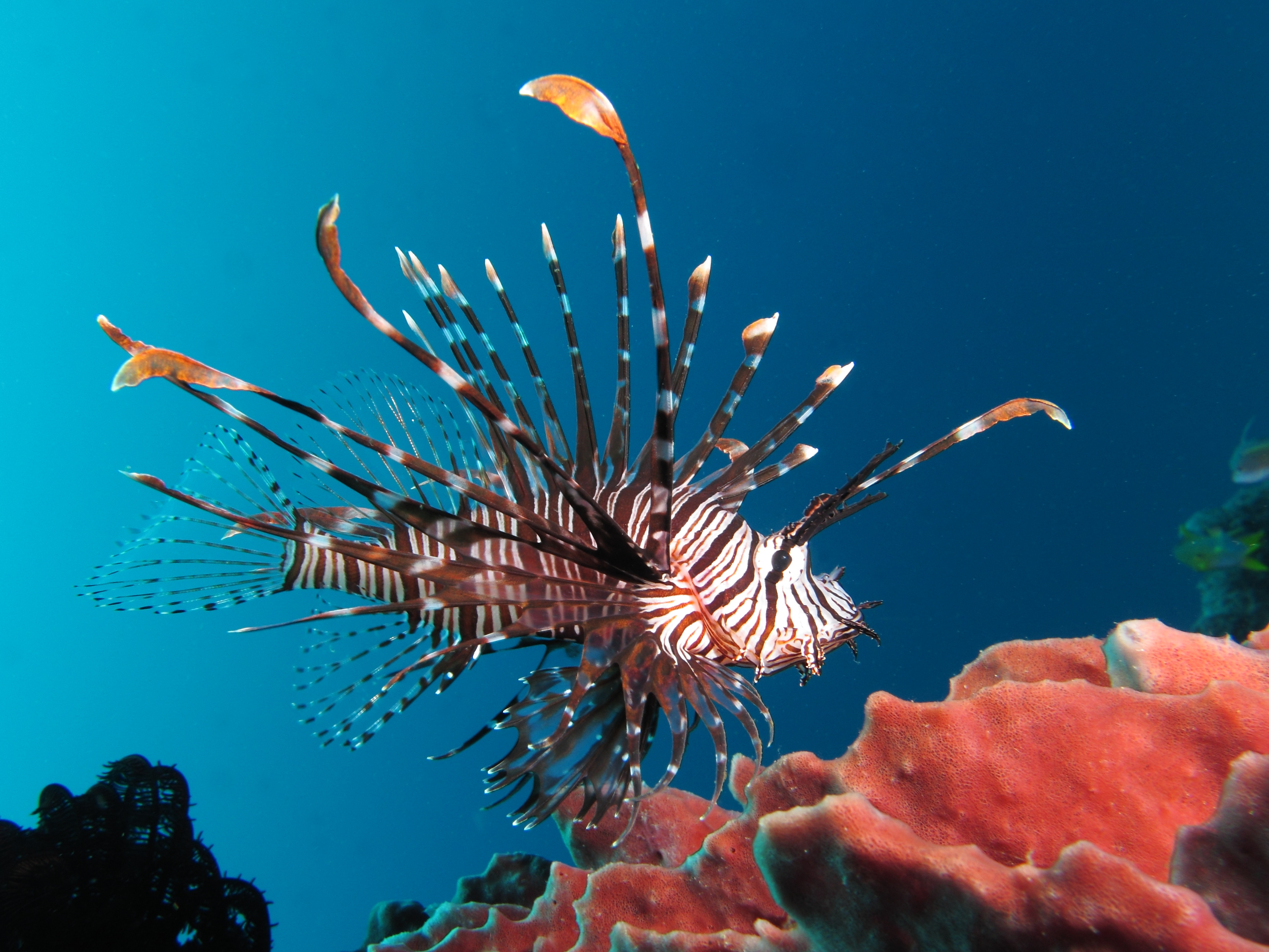You may have seen lionfish in home aquariums, but this species has made it into Florida’s waters and is disturbing the natural ecosystem. Divers have been spearing lionfish for several years now, and recently, Whole Foods Market began to offer it in all 26 of its Florida stores in an effort to reduce lionfish populations.
David Ventura, the seafood coordinator for all Florida Whole Foods locations, says the average size of a lionfish is one to two pounds, and the yield weight of lionfish fillets is about 30 percent of the fish. With a network of divers from Marathon Key to Ponce Inlet, Cape Canaveral and Port Orange on the Atlantic coast, and partners in Panama City, Destin and Pensacola, Whole Foods purchases all of its lionfish from Florida markets.
He explains that lionfish is versatile and can be prepared raw in sushi or ceviche when it is first caught, it can be grilled whole in foil or the fillets can be pan sauteed for fish tacos. Before you purchase it, a Whole Foods team member will remove the venomous spines so it can be safely handled at home. Ventura notes that while there are venomous spines on the fish, those spines cannot release venom once they are caught and on ice, and the meat is perfectly safe to eat.
Lionfish were initially spotted near Dania Beach in Broward County in 1985. The invasive species has steadily grown to inhabit the entire Gulf of Mexico and can be found on the Atlantic coast from the Florida Keys to Rhode Island, although they don’t live long in the cold waters of the northeast.
Native to the Indo-Pacific region, lionfish came to this area through the aquarium trade. It is thought that lionfish owners would dump them into the nearest ocean once they realized the species doesn’t play well with others in the tank.
Although they are appealing creatures with zebra stripes and fan-like fins, lionfish are wreaking havoc on Florida’s ecosystems. There are several reasons for this. They are predatory reef fish that eat grouper, snapper, shrimp, and other human favorites in their juvenile stages, which impacts the number that will grow to adulthood. They also kill off cleaner species whose purpose is to remove algae from the reefs. Lionfish are affecting the population of all of these species because they have no natural predators in Florida’s waters for population control. Also, female lionfish can spawn every four days, producing about 12,000 eggs each time. This allows them to reproduce quickly.
According to the Florida Fish and Wildlife Conservation Commission, divers are encouraged to remove lionfish from Florida waters to limit the negative impacts to marine life and ecosystems. Lionfish can be speared, caught in hand-held nets or caught on hook and line. There is not a recreational or commercial bag limit for this invasive species.
Local scuba diver spear fisherman, Vincent Luisa, has been fishing for lionfish for about three and a half years and is one of the suppliers for Whole Foods. Based in Ponce Inlet, his team brings in about 50 pounds of lionfish per person, per drop in a typical day. Depending on the depths of the fishing area and the conditions, each team member usually makes six to eight drops per day. Luisa says that despite spearing others around them, lionfish don’t move or swim away because the lack of natural predators has instilled no fear in them. This makes the lionfish an easy target for spear fishermen.
“The main thing is getting the product out to the restaurants,” Luisa says. As recently as last summer, his team would only catch what they had pre-sold. Now they’re getting as many as they can. “Since Whole Foods came on board, it’s a wide-open market for us.”







Comments